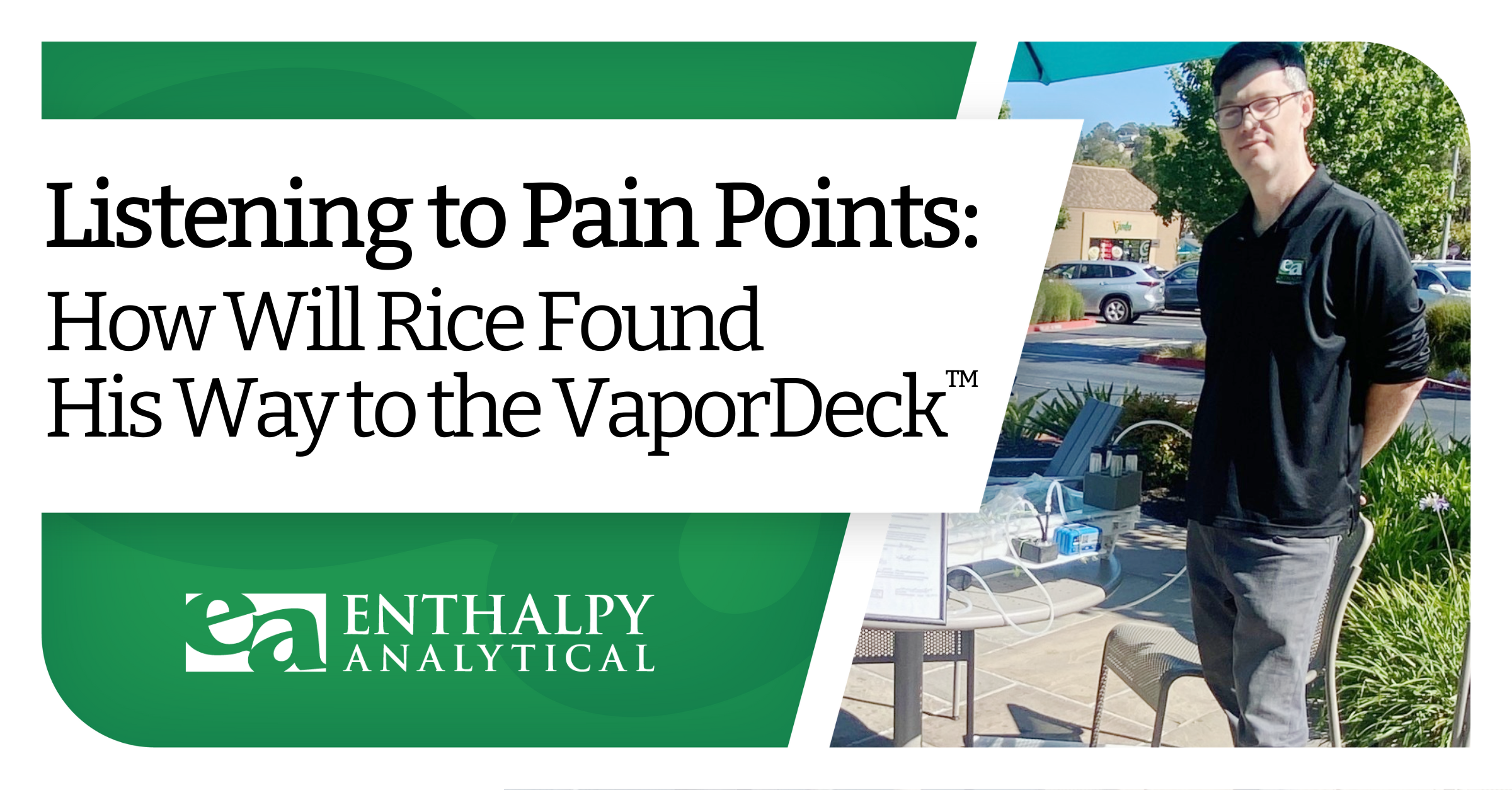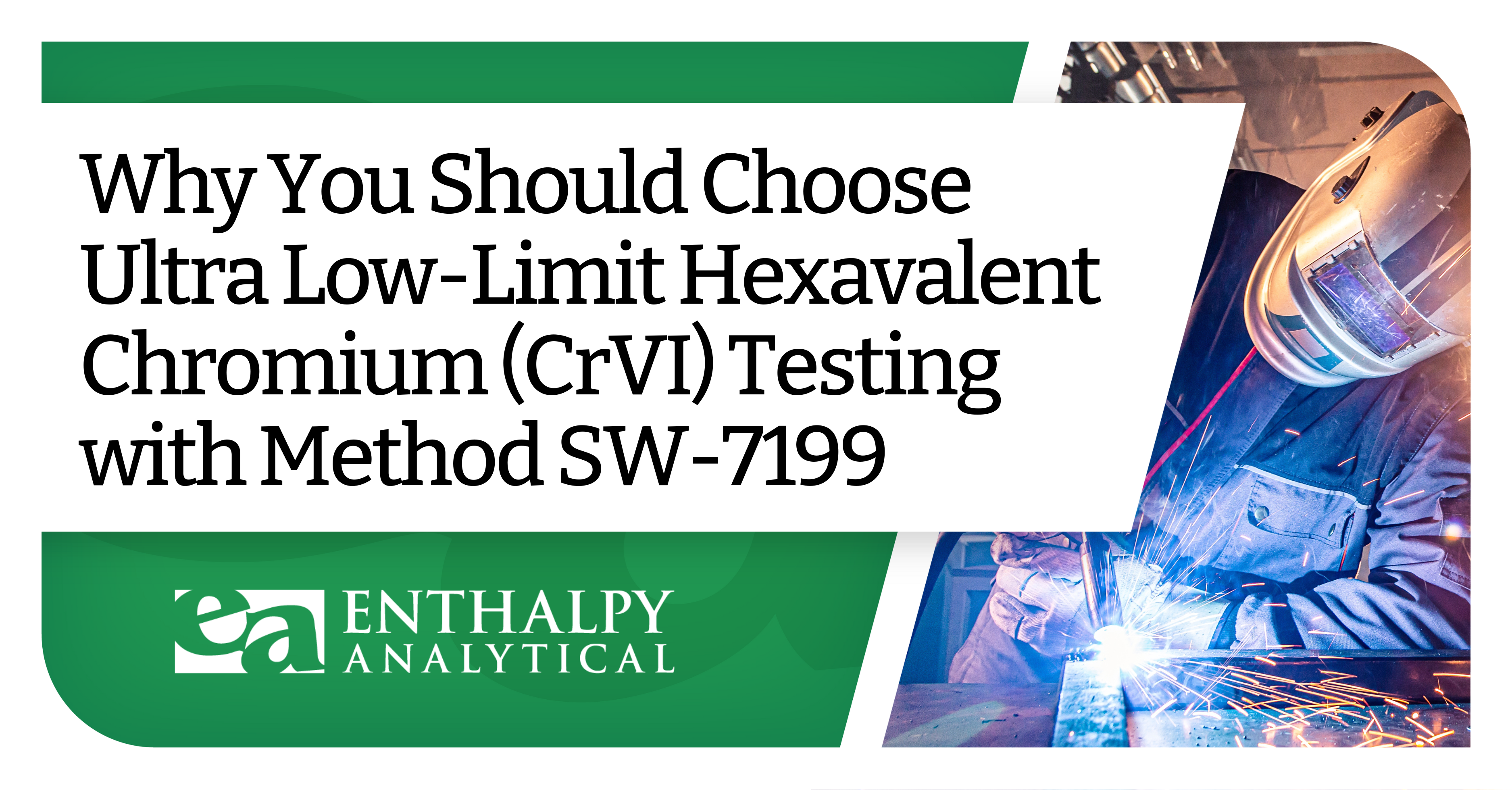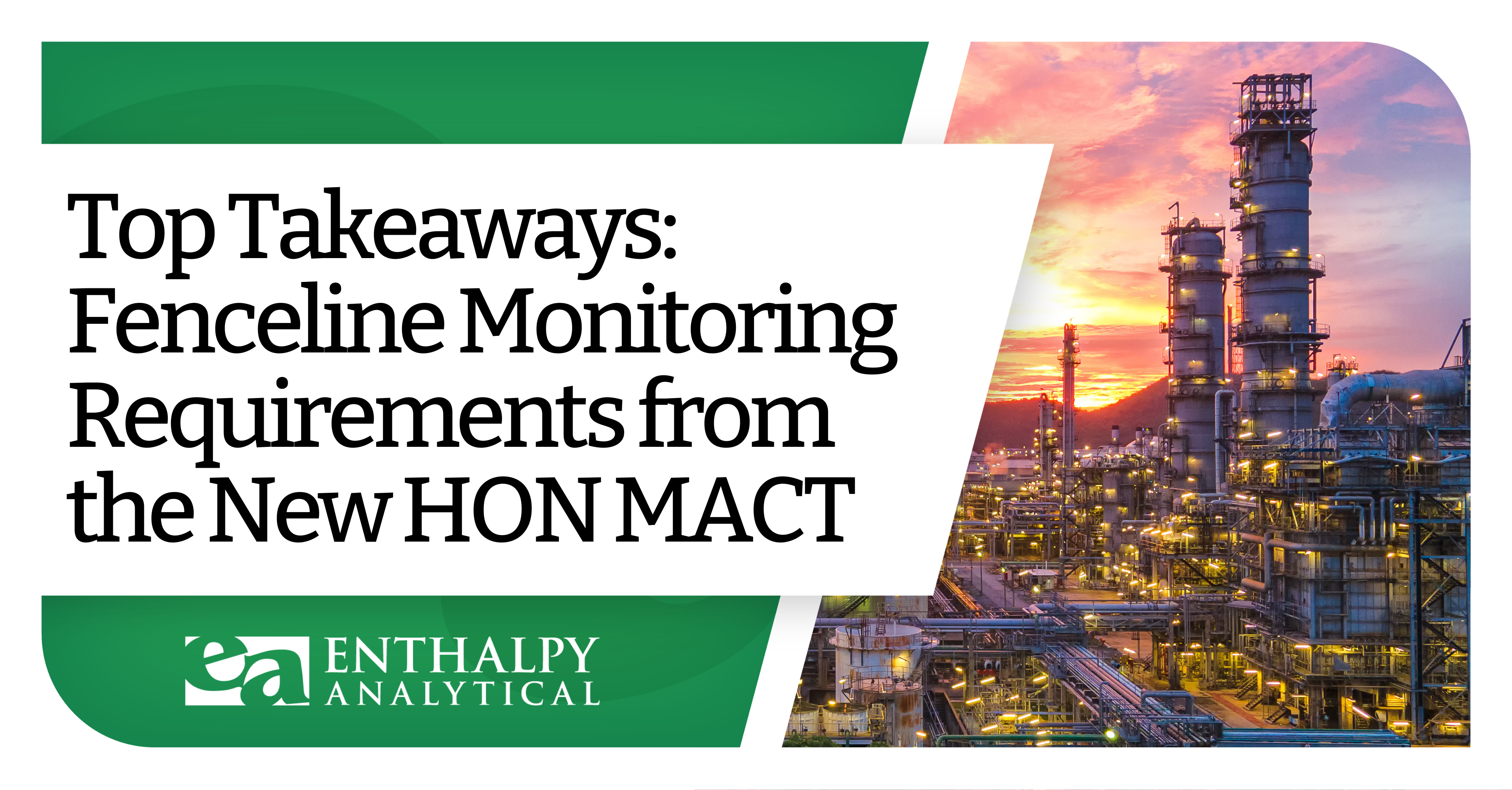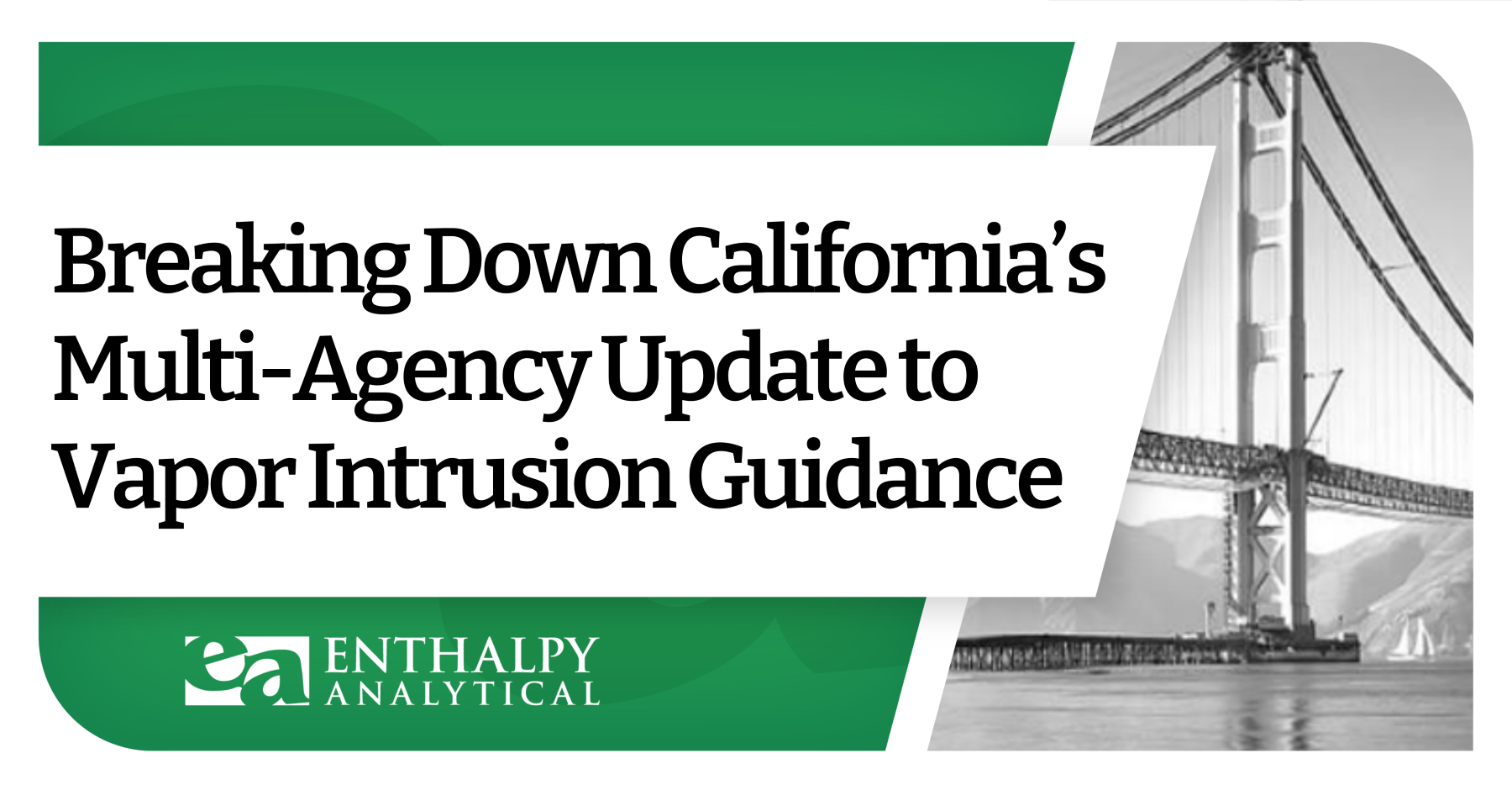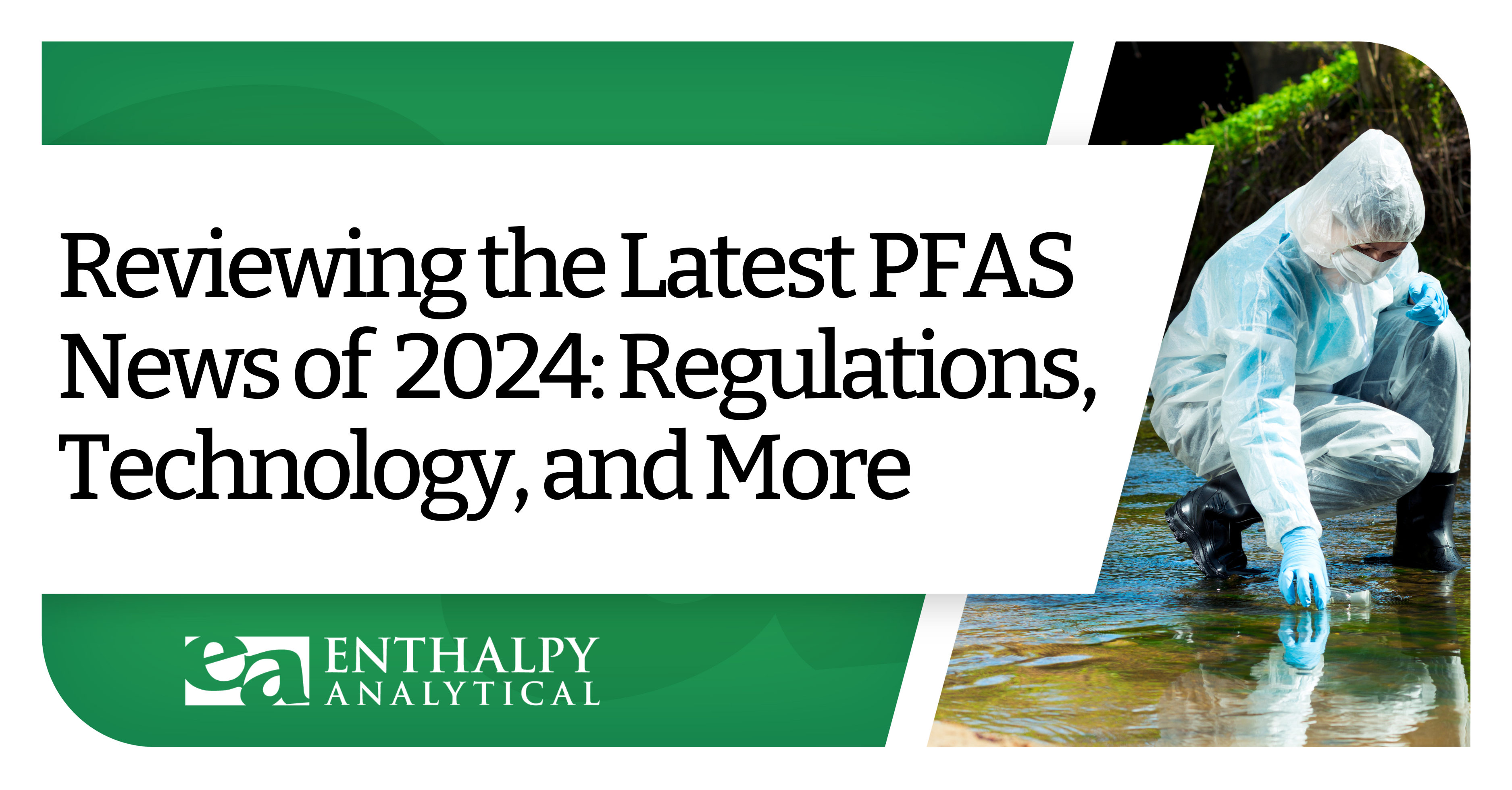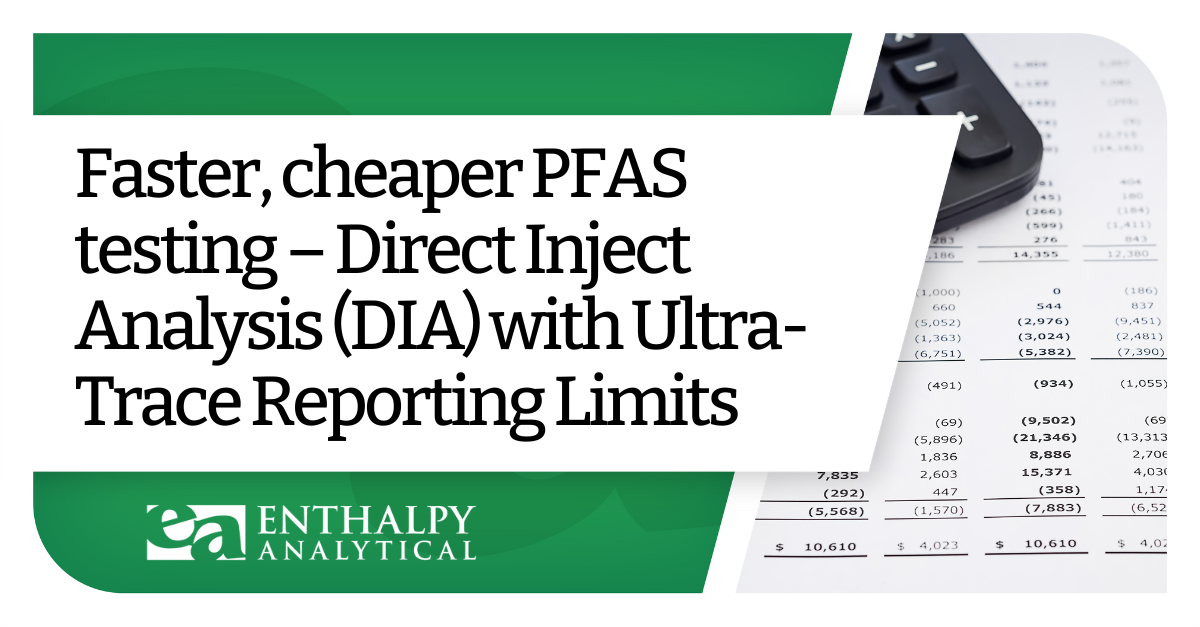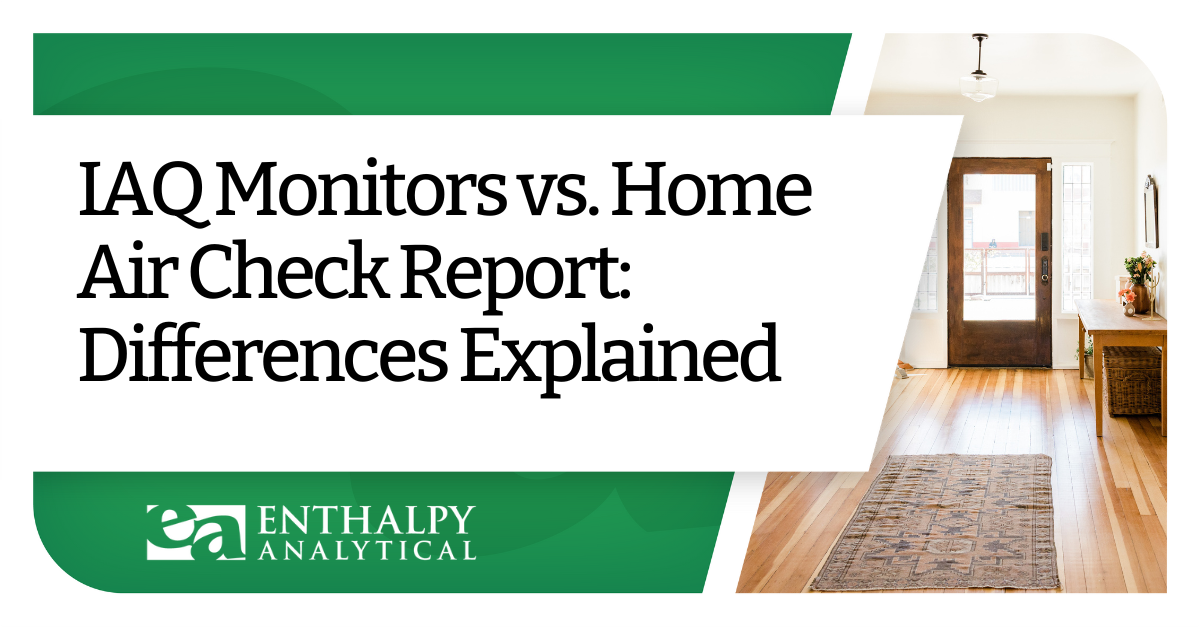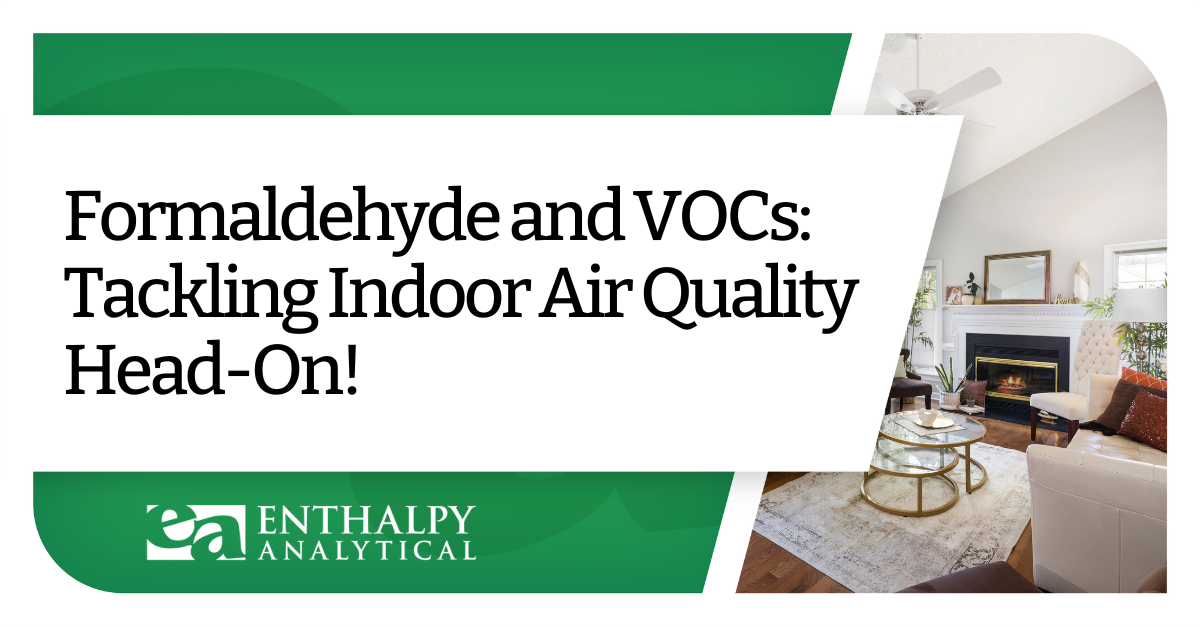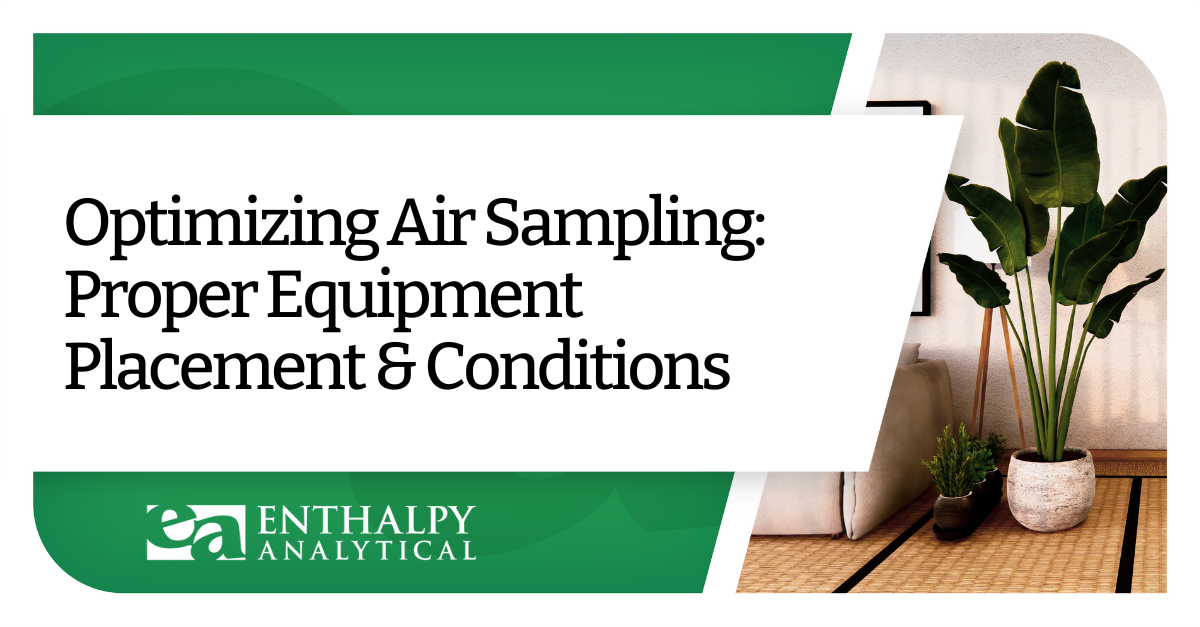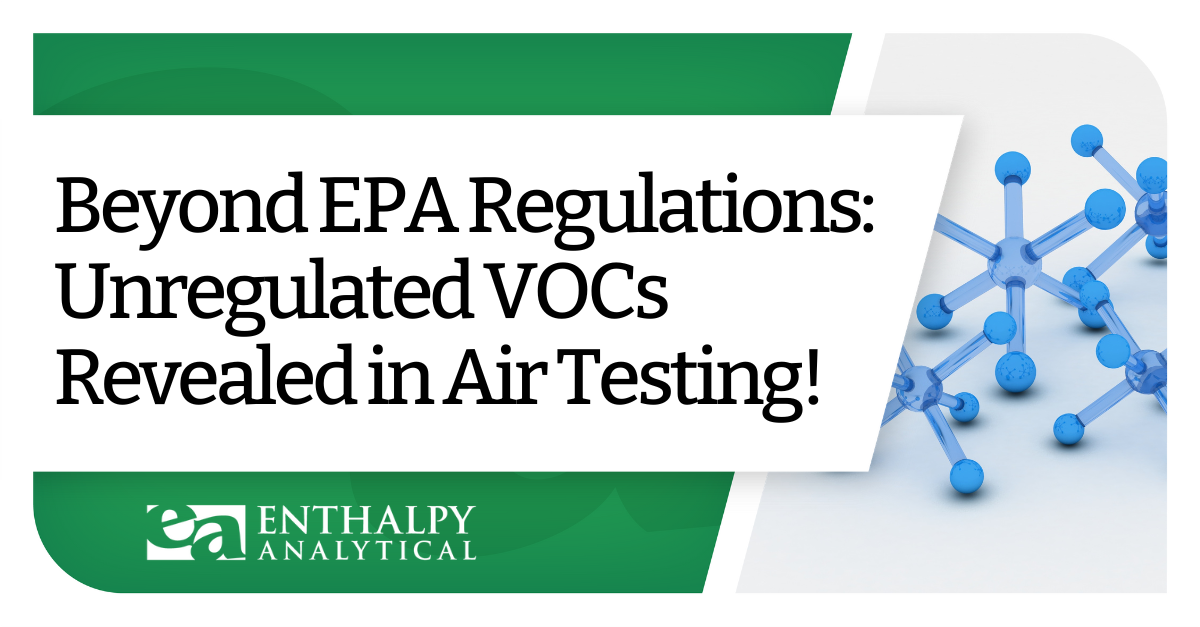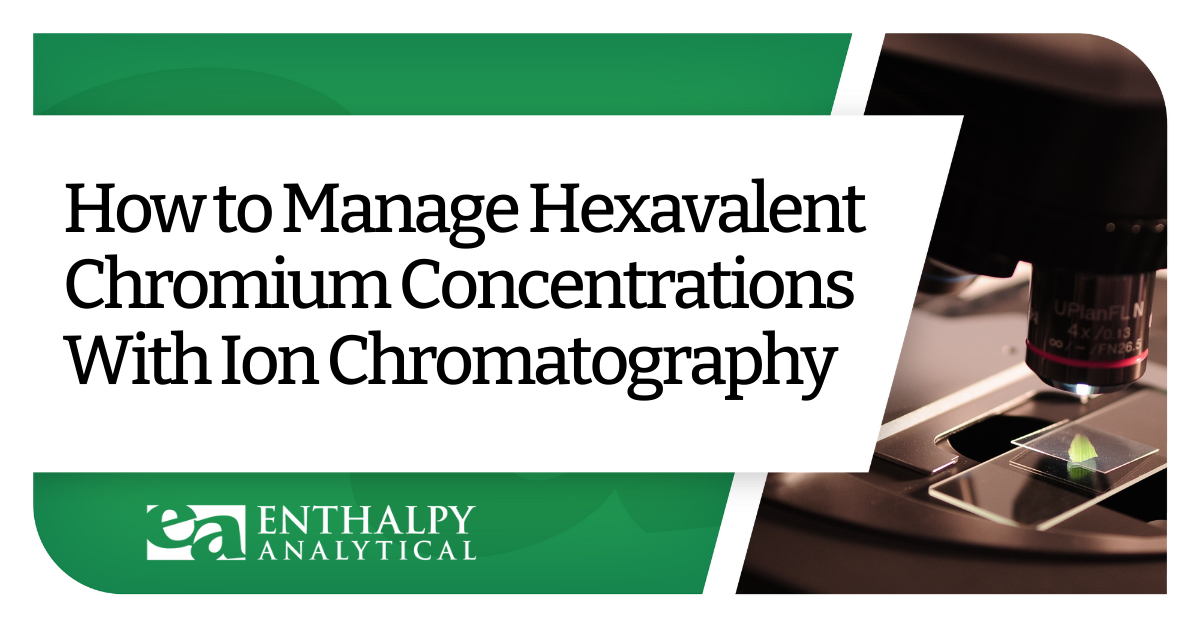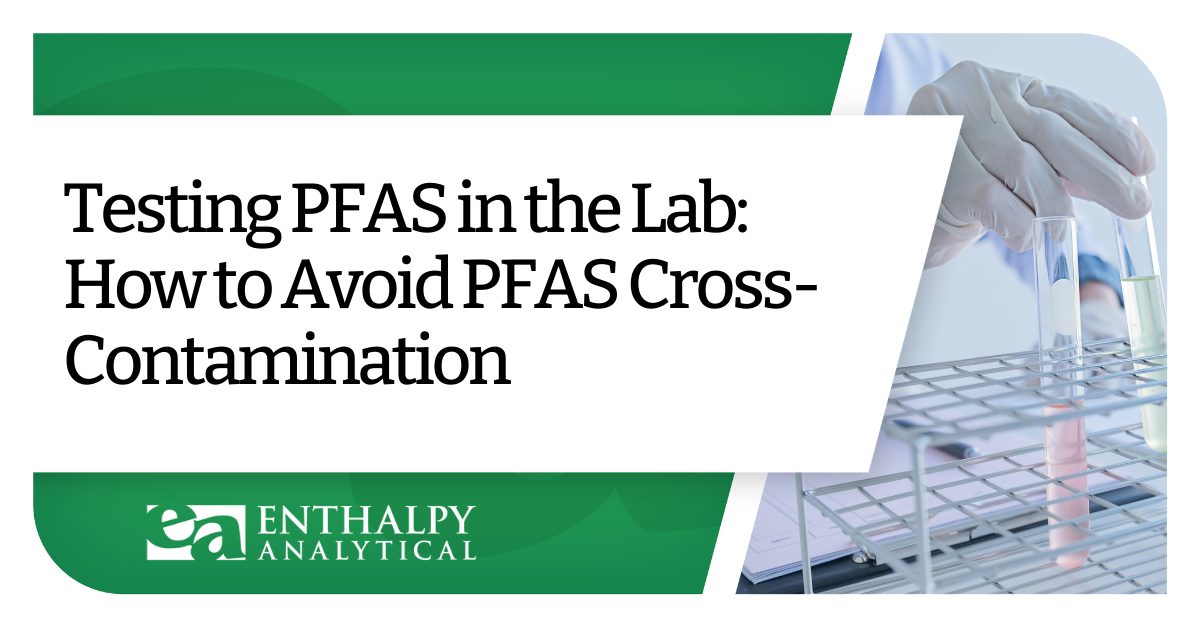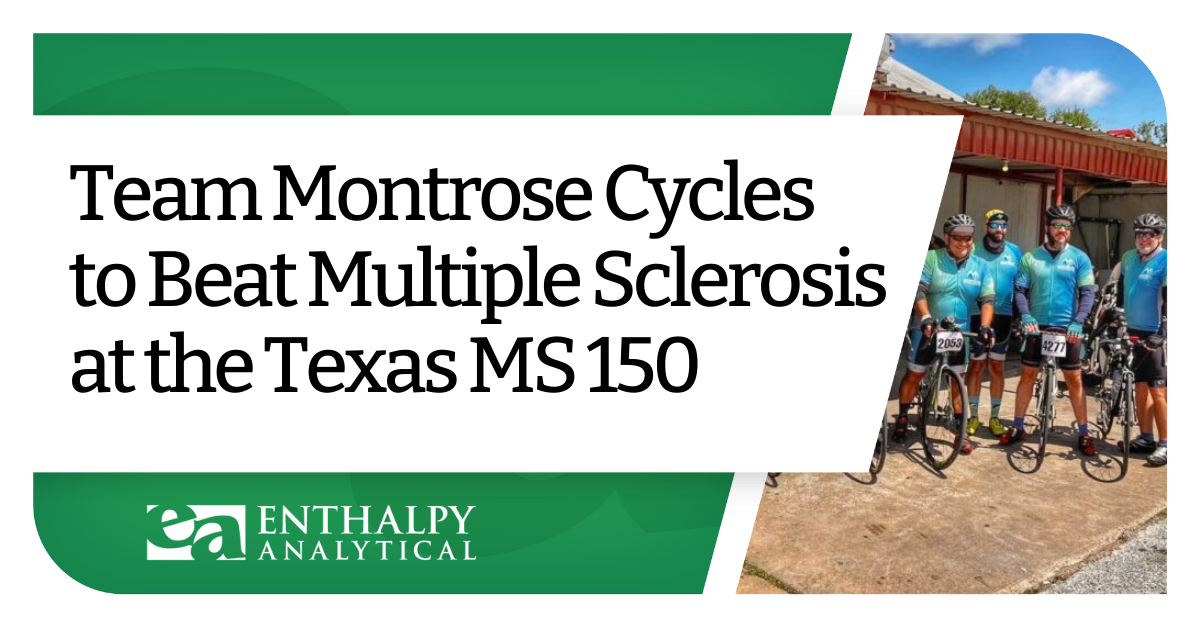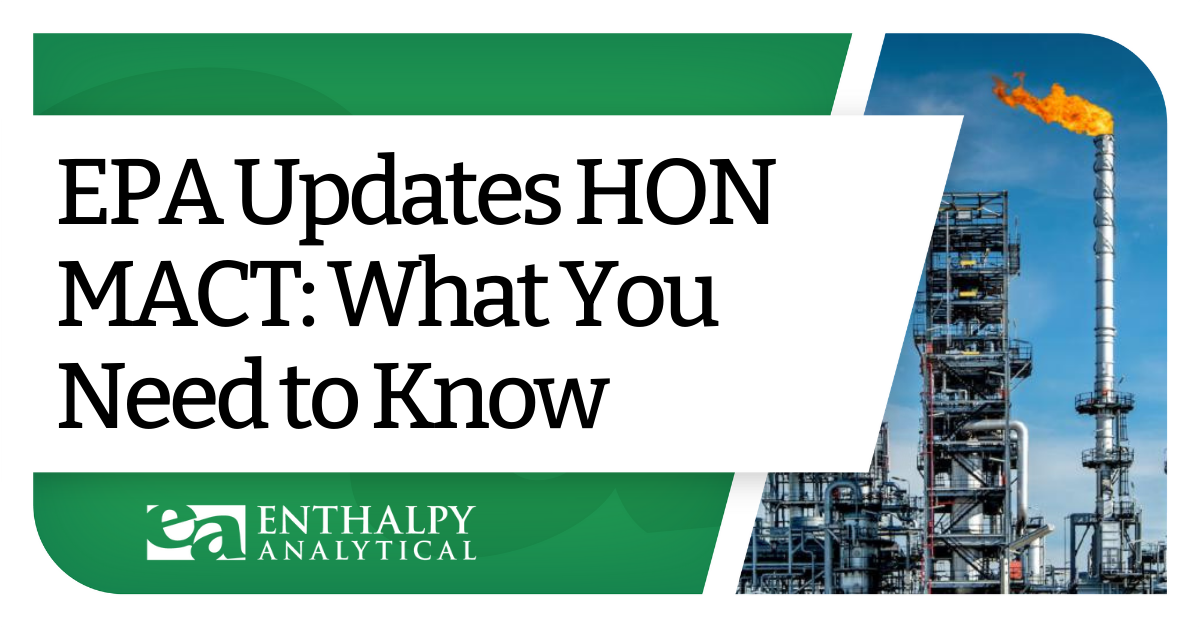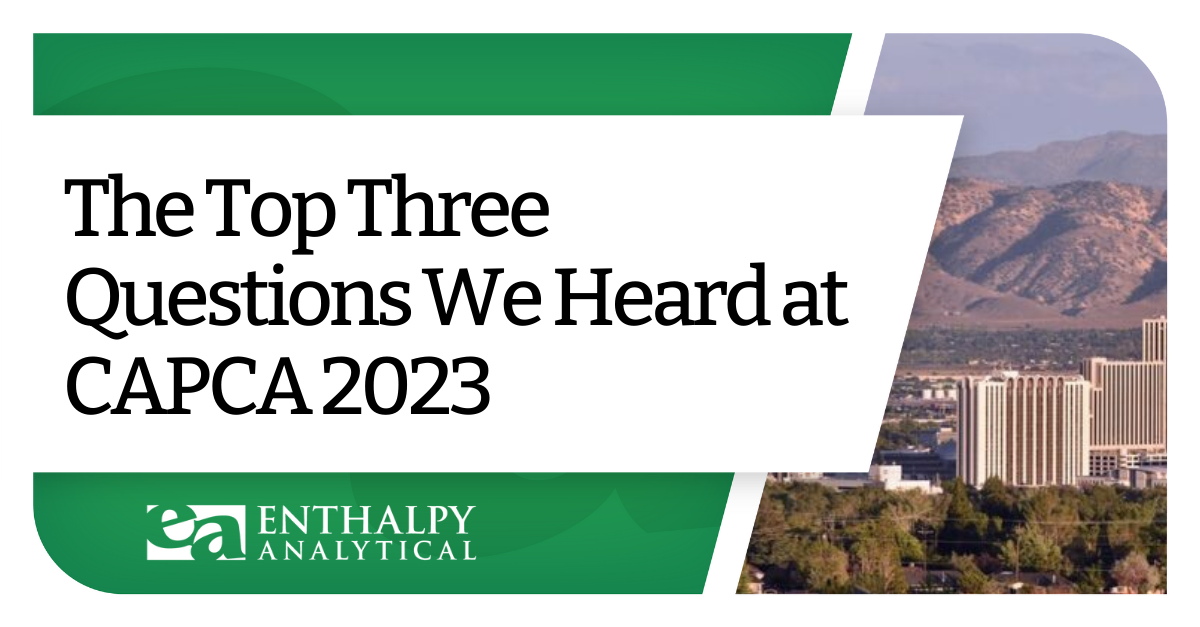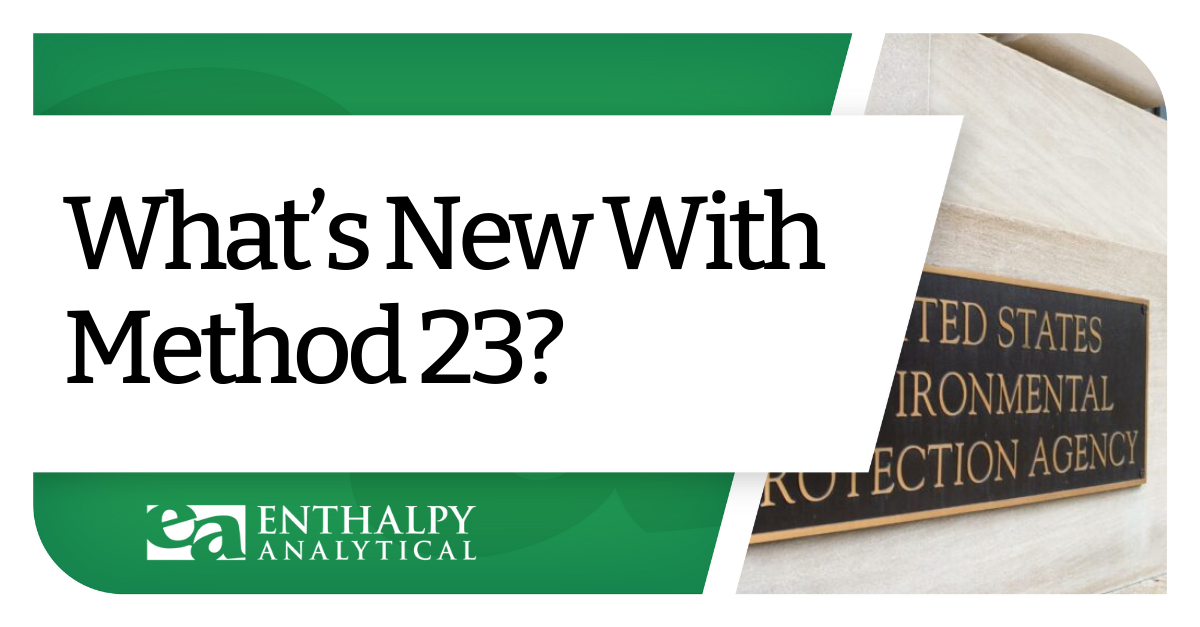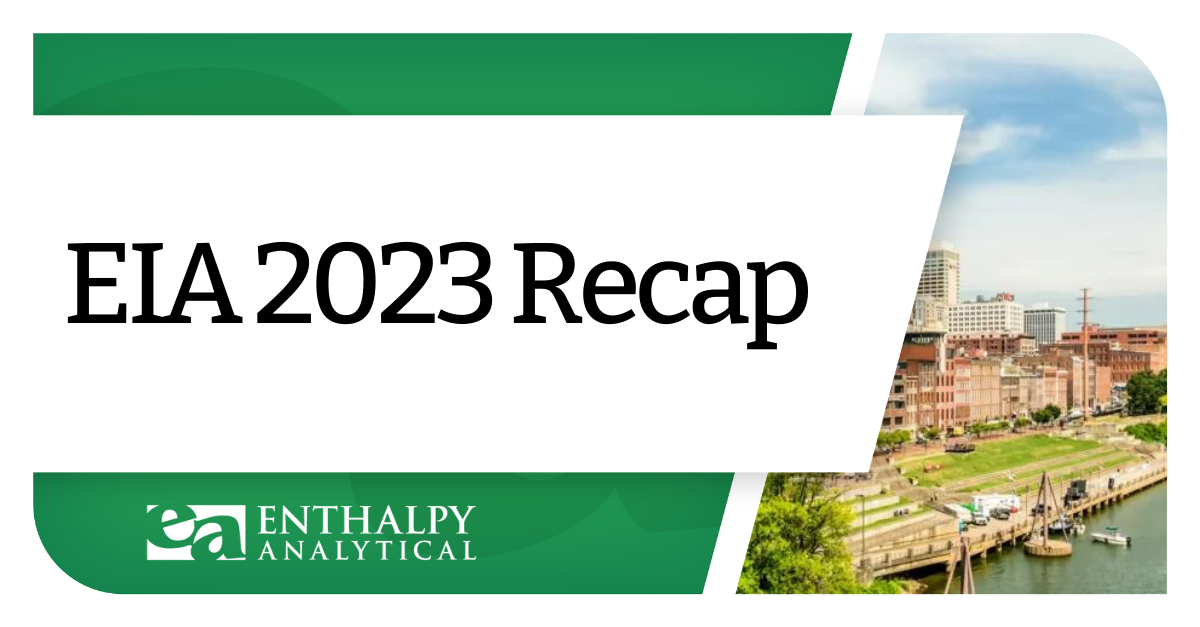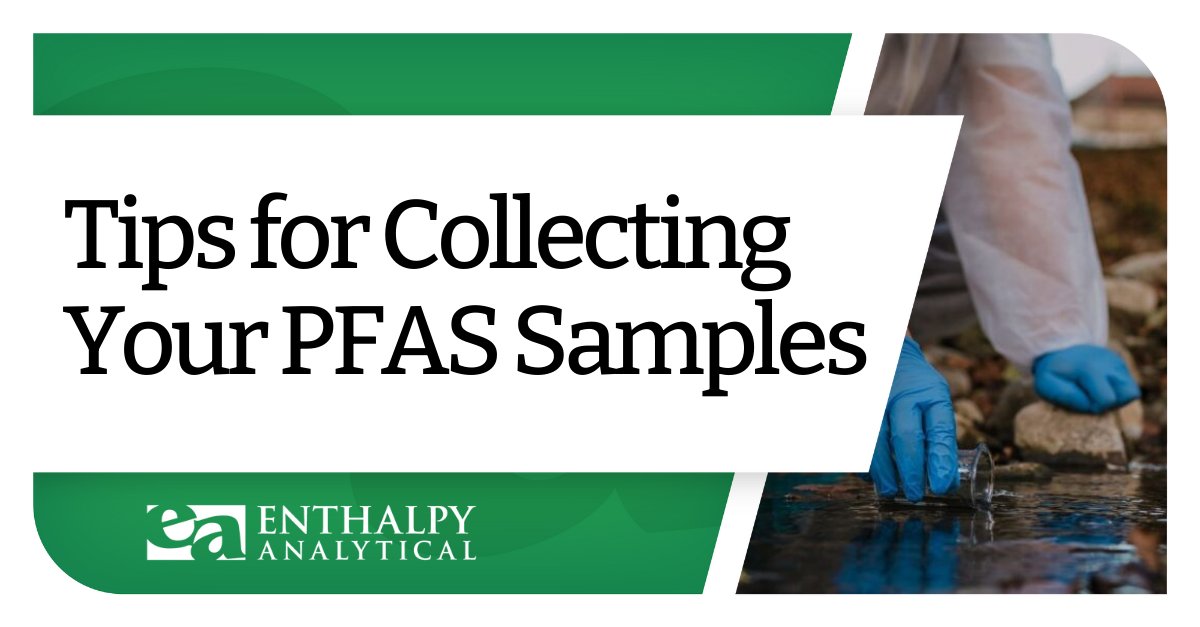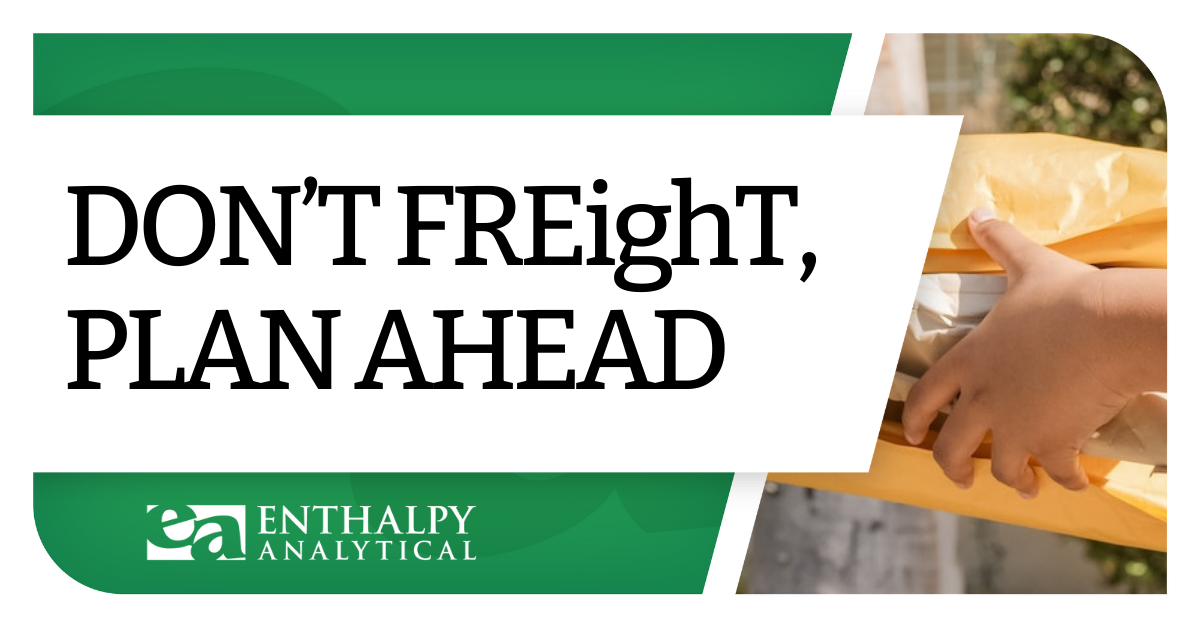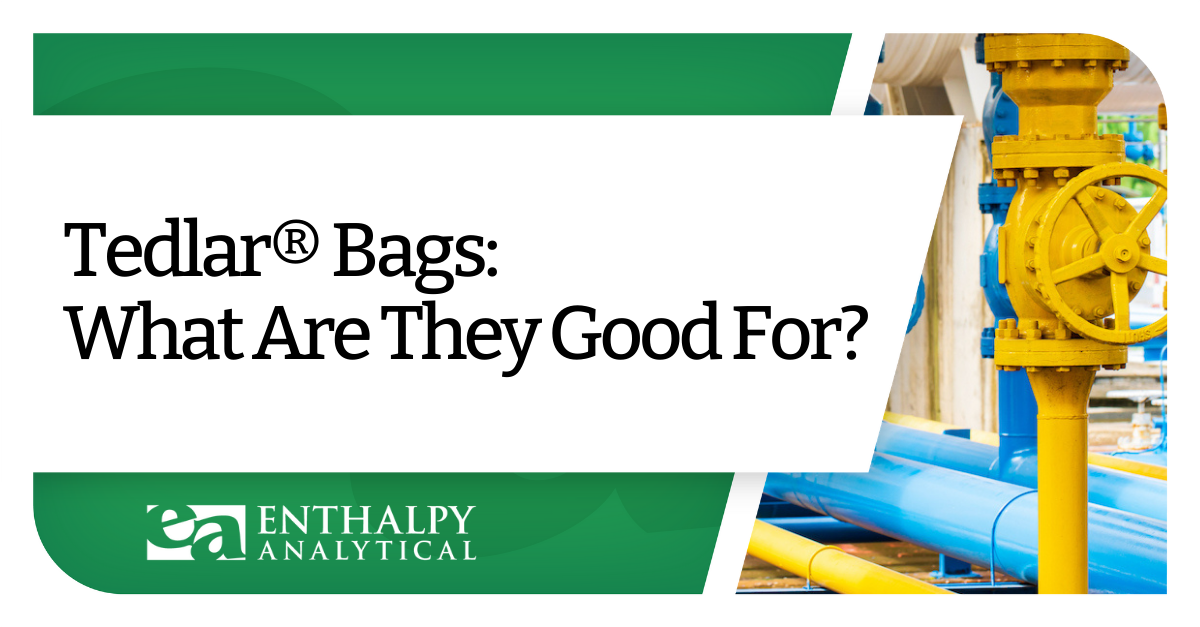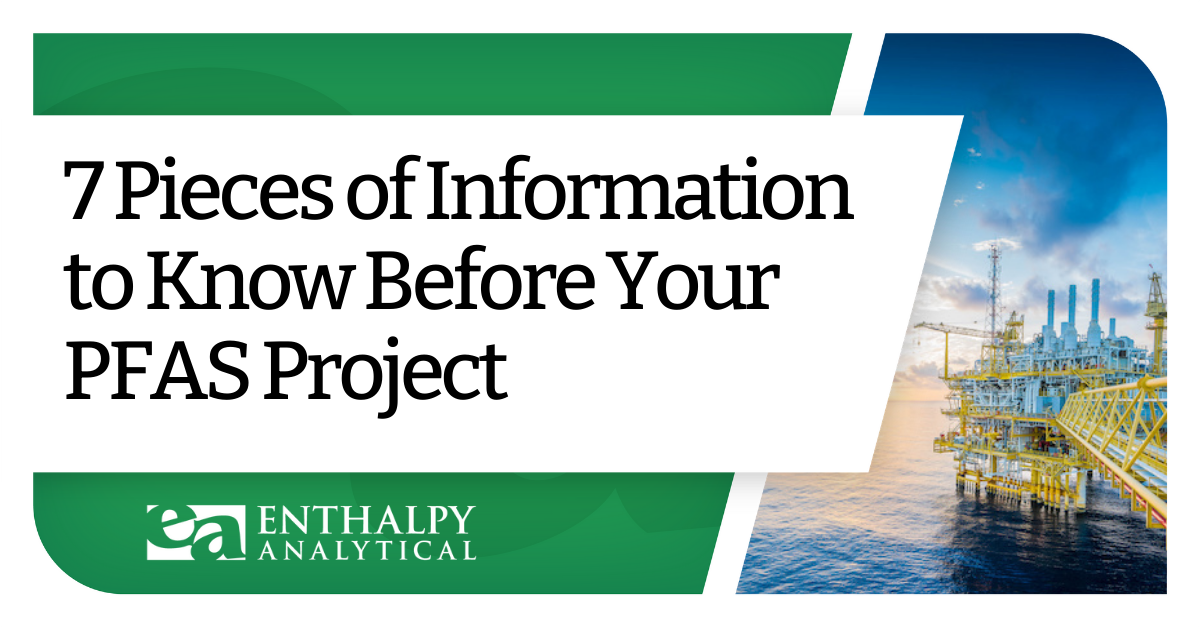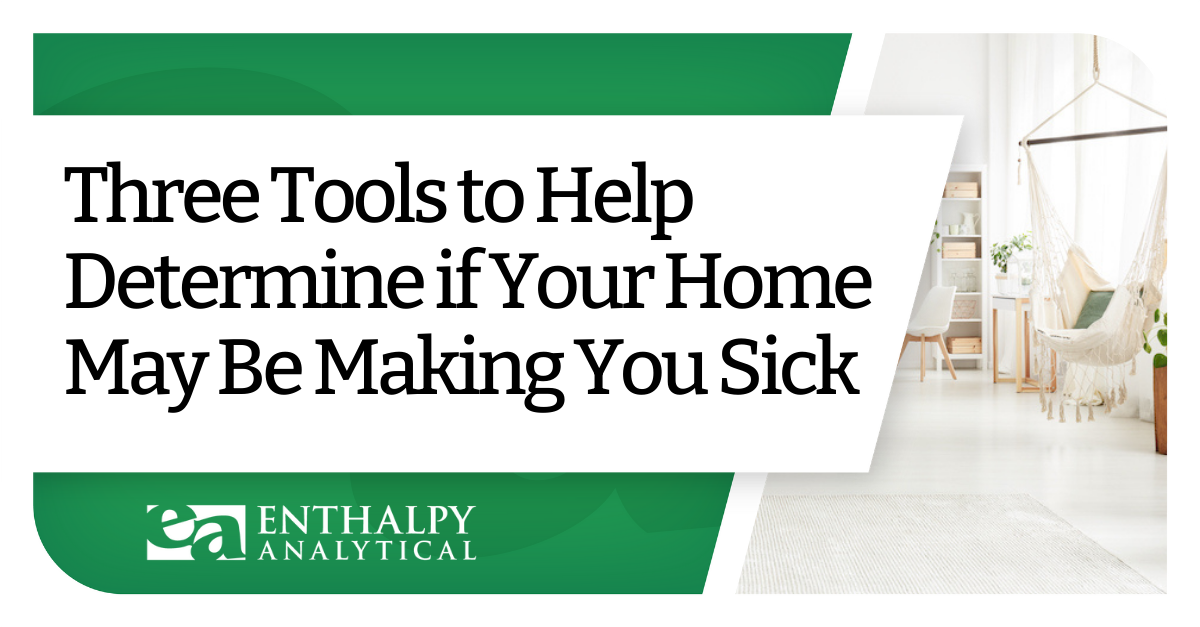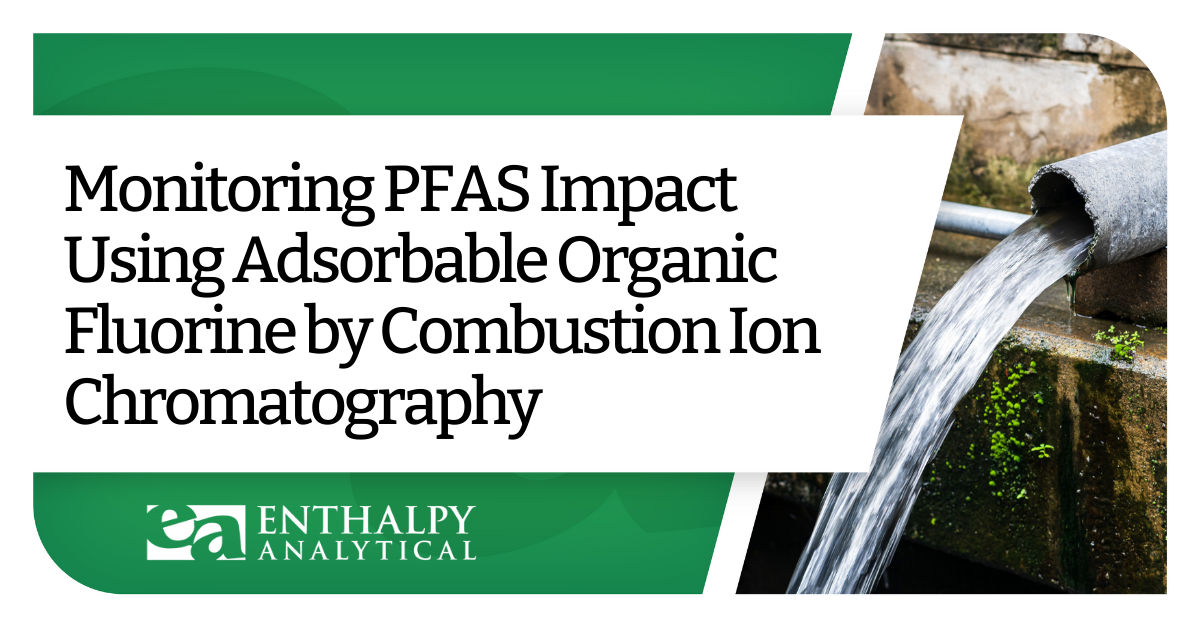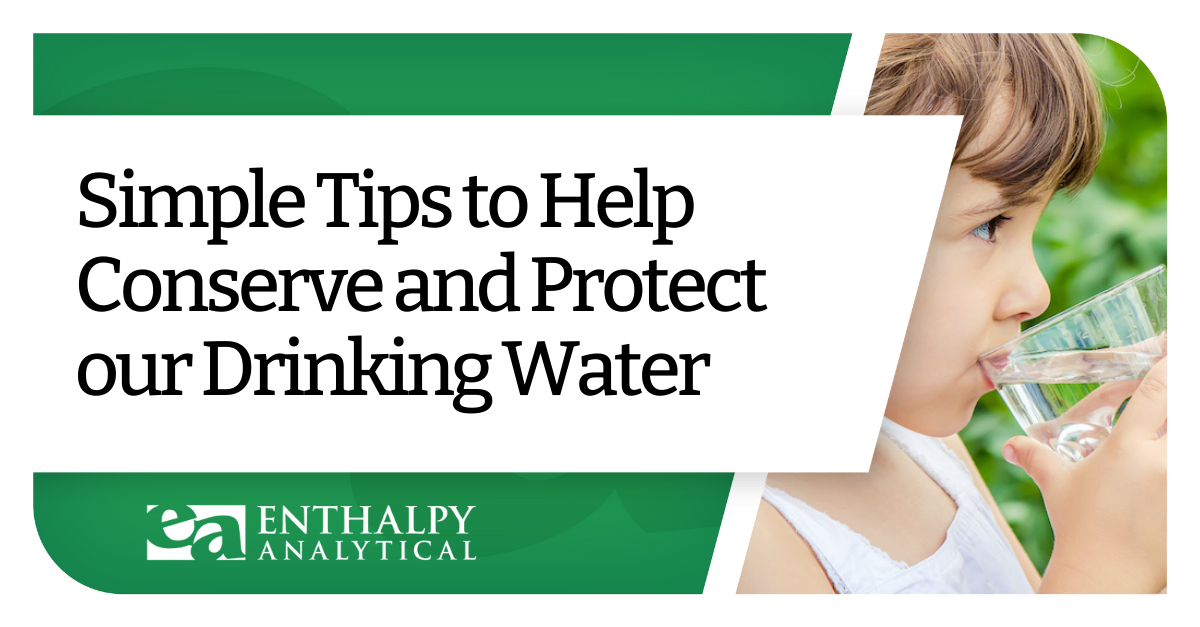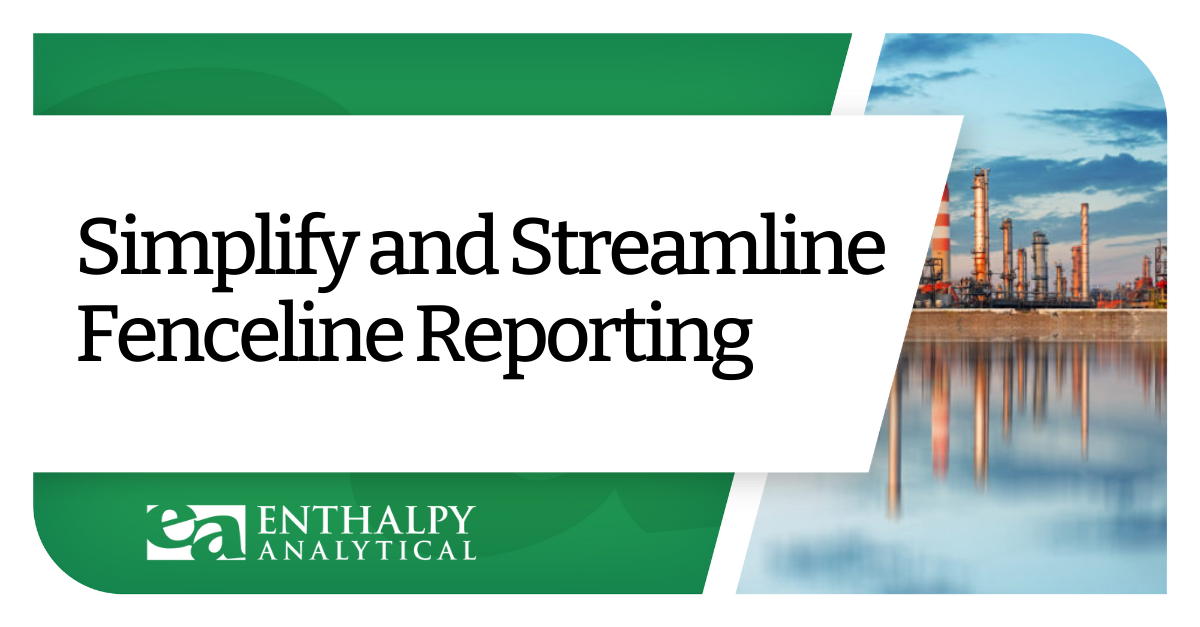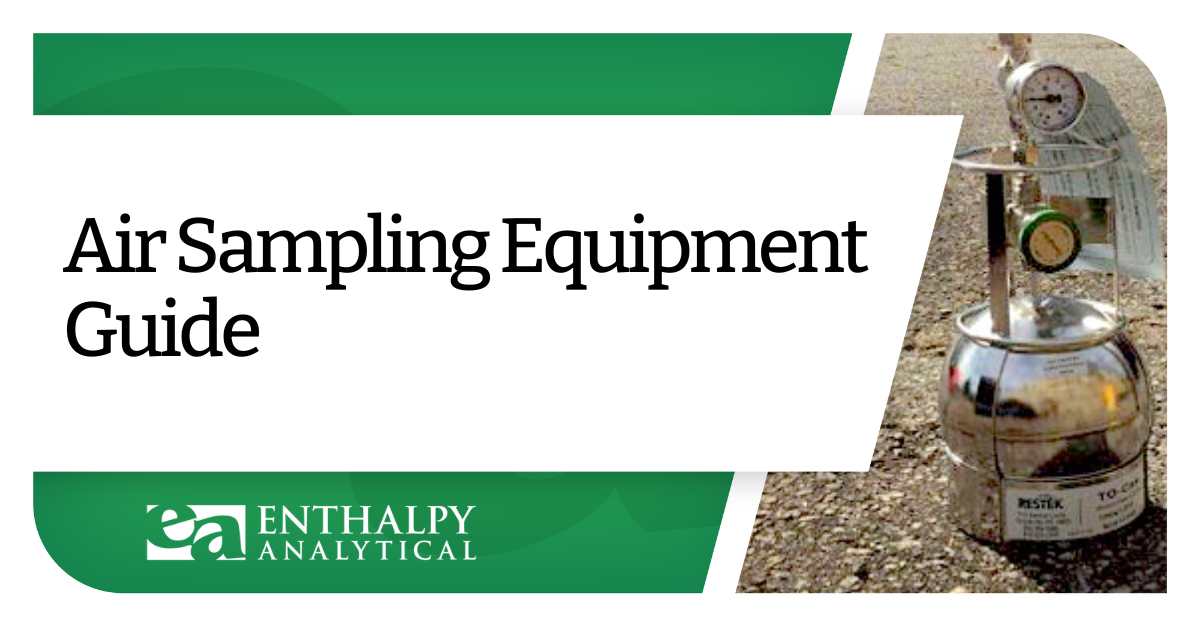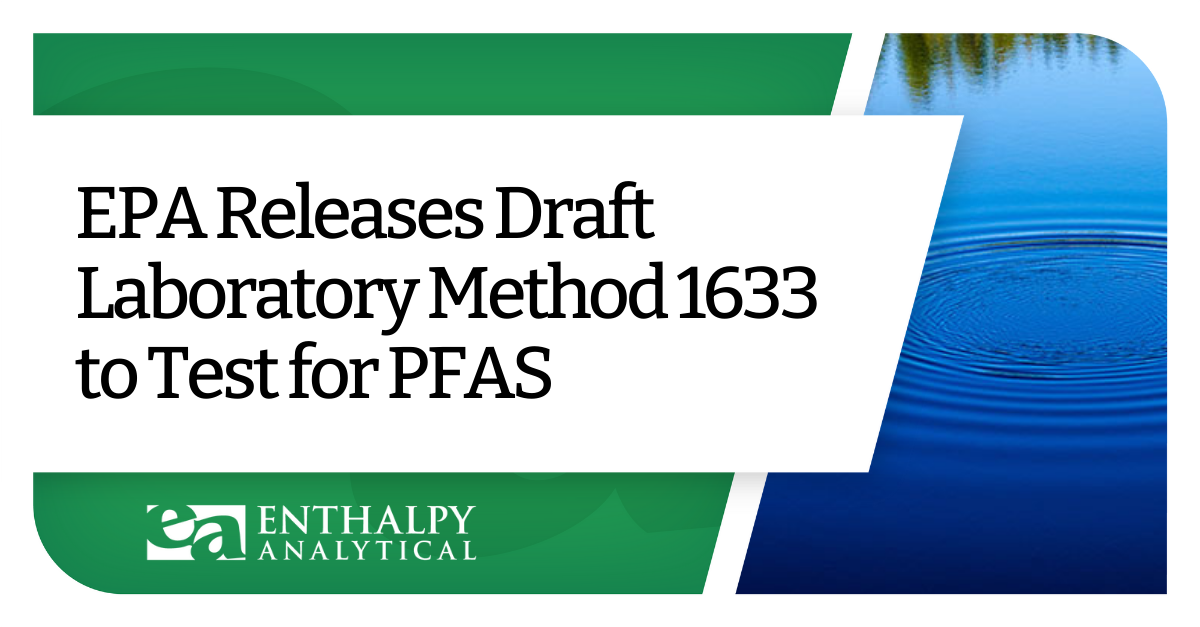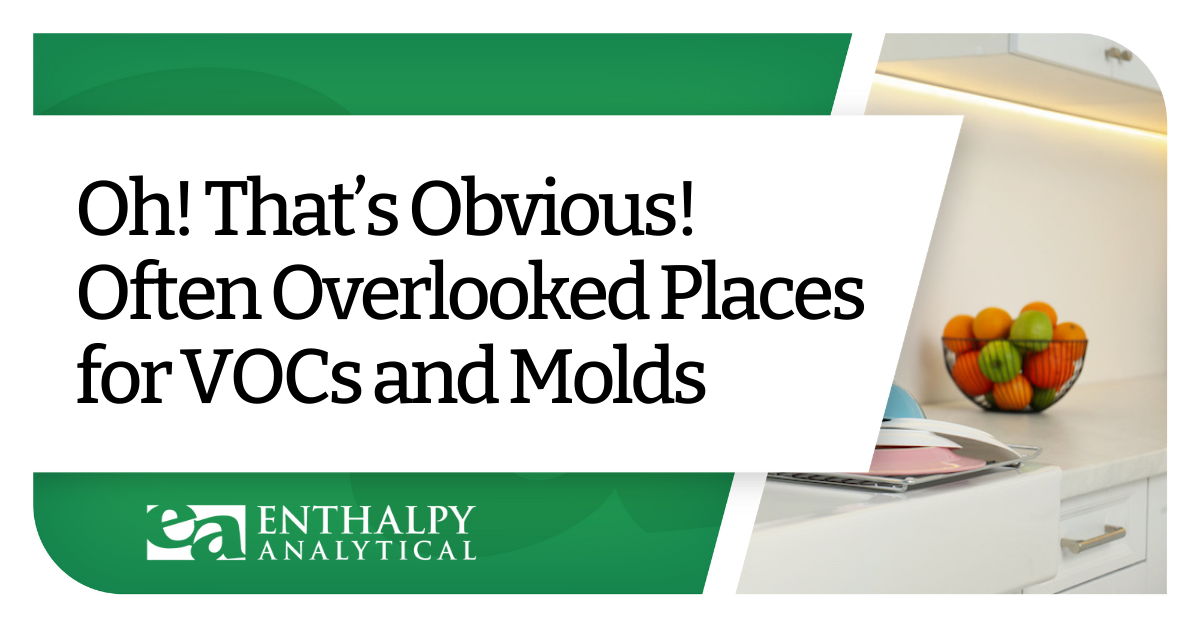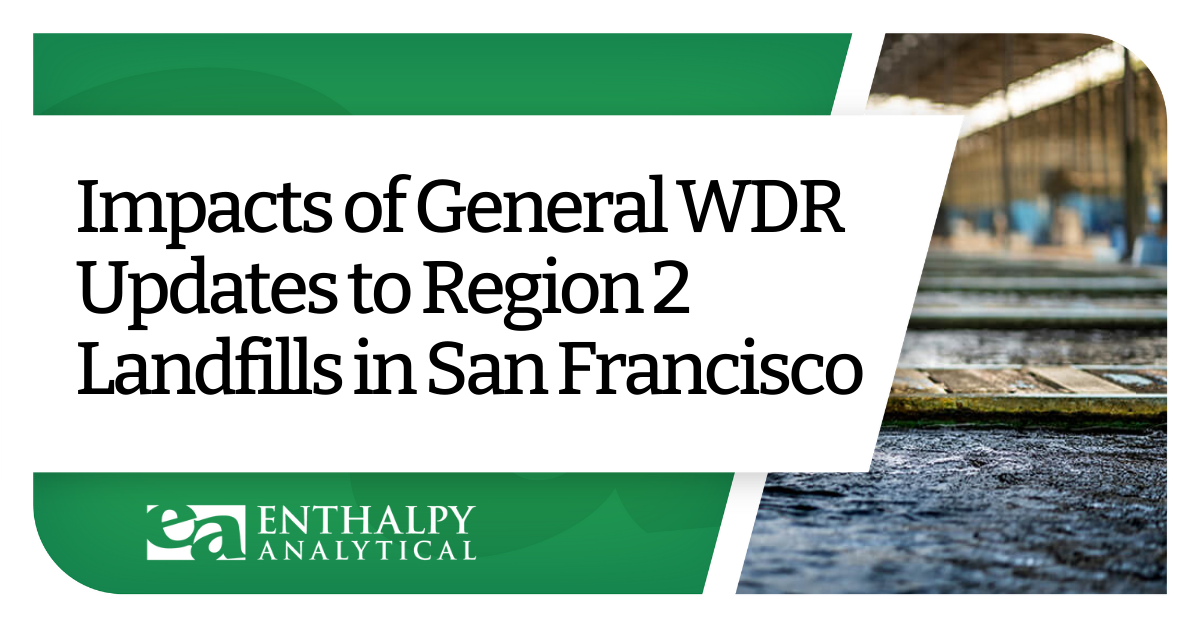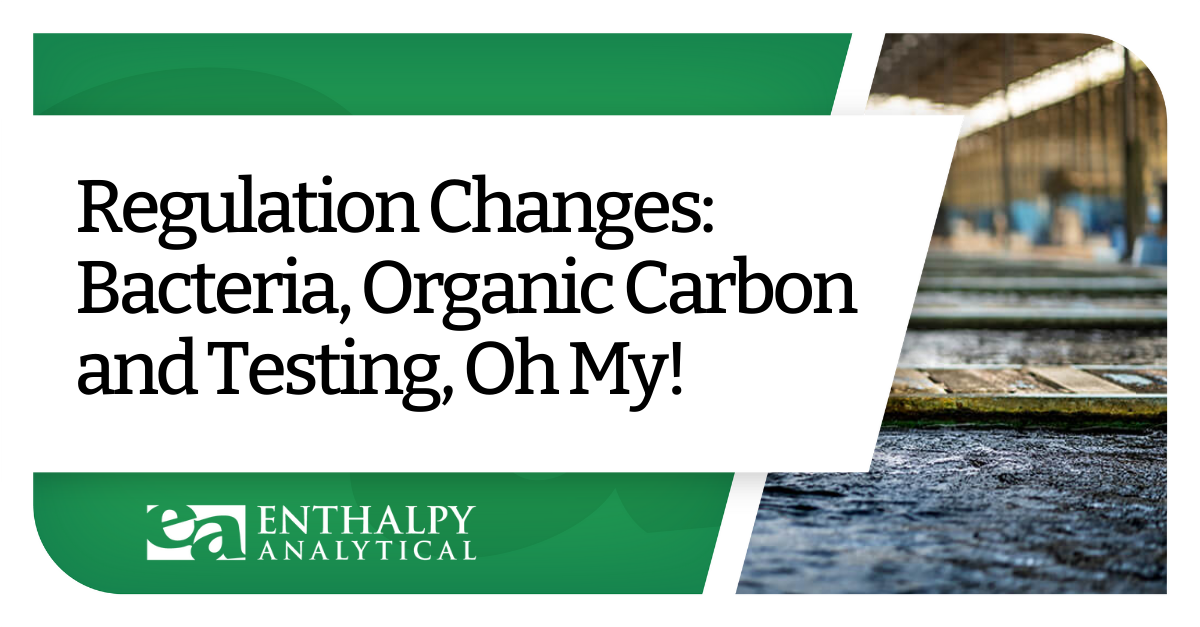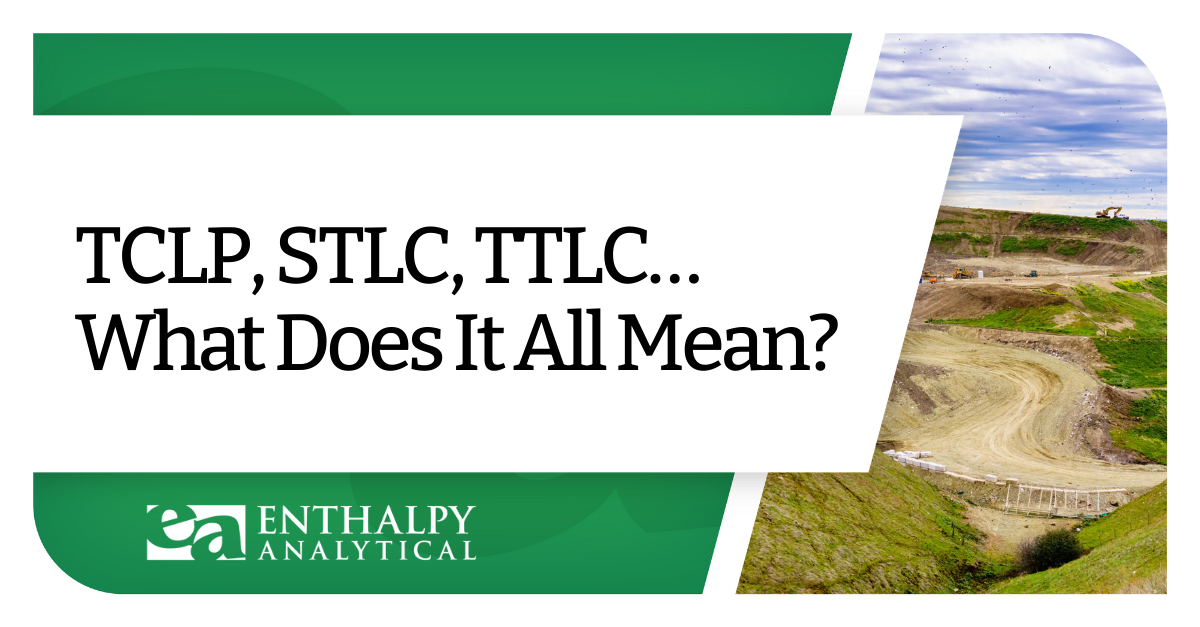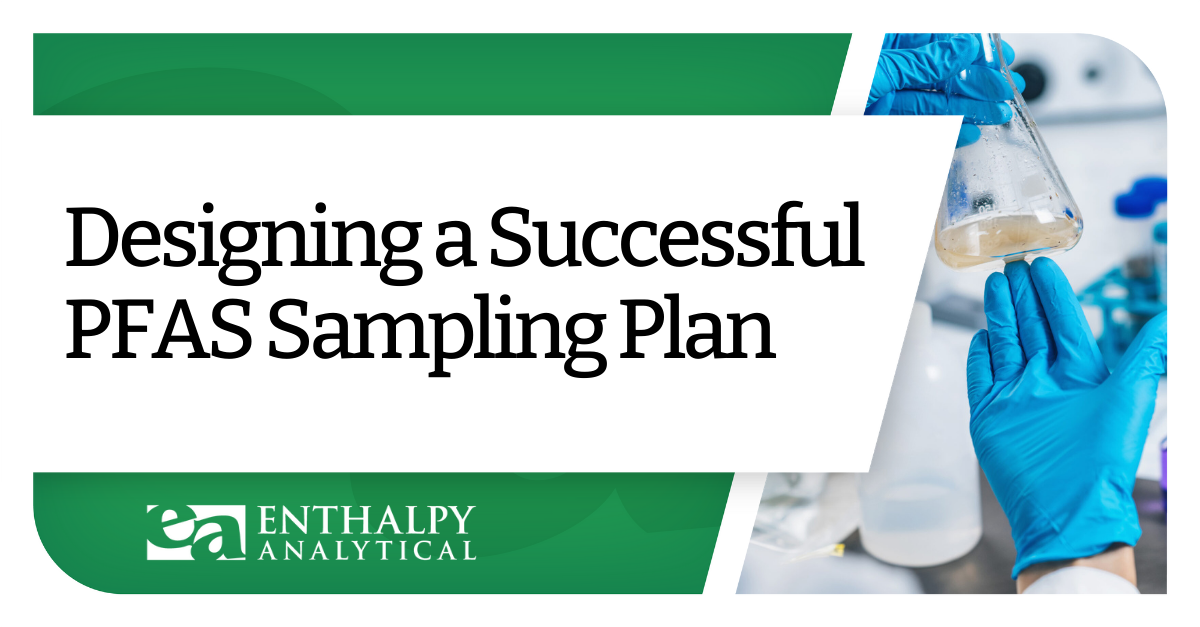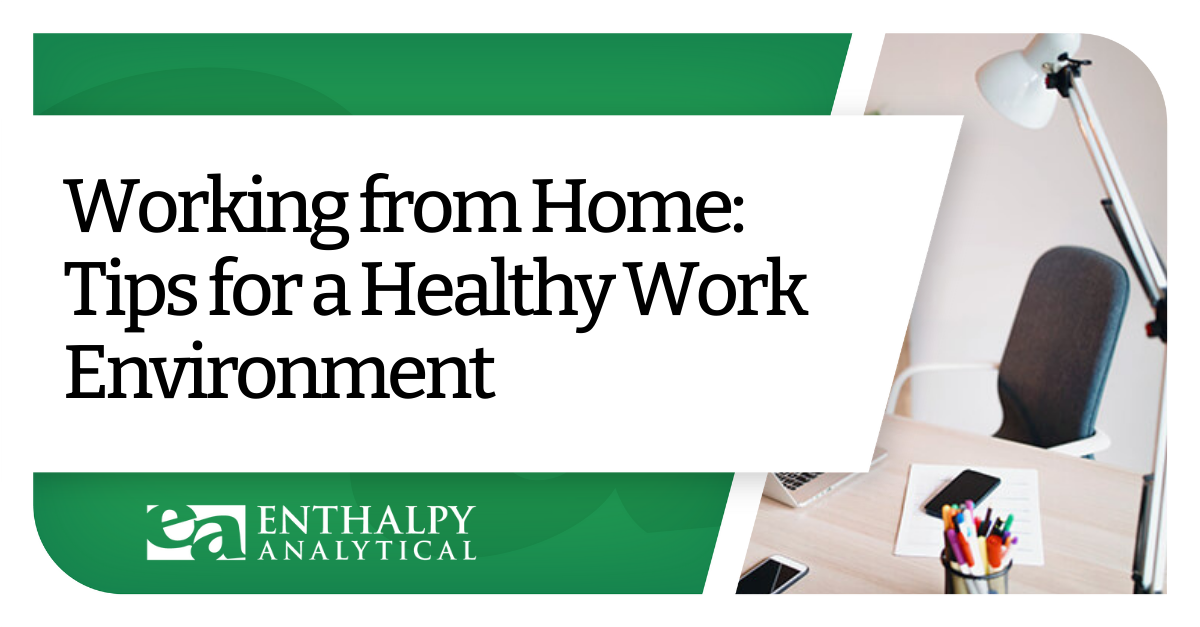Insights Blog
What the New EPA Restrictions Mean for Vapor Intrusion and Soil Vapor Management
The EPA’s latest restrictions on hazardous chemicals like TCE, PCE, and CTC impact vapor intrusion and soil vapor management. Discover how these regulations affect compliance, risk assessments, and mitigation strategies.
Your Air Testing Guide to LEED v5
Leadership in Energy and Environmental Design (LEED) is a globally recognized certification system for green buildings, developed by the U.S. Green Building Council (USGBC). Among its sustainability goals, LEED v5 focuses on reducing environmental impacts through advanced indoor air quality testing and standards, ensuring that buildings provide healthier environments for occupants.
How Helium Shrouds Can Support Real-time Tracing for Vapor Intrusion
Tackle Vapor Intrusion with Faster sampling and less wasted helium.
Listening to Pain Points: How Will Rice Found His Way to the VaporDeck™
Enthalpy Analytical's VaporDeck™ revolutionizes vapor intrusion testing with faster sampling, reduced helium use, and innovative designs, offering superior efficiency and reliability for site development and public safety.
Ethylene Oxide in Wastewater: Challenges and Solutions for Accurate Detection
Ethylene oxide (EtO) is a carcinogenic gas used in various industrial applications. It can contaminate wastewater, posing health risks.
TO-17: A Vital Method for Monitoring Air Quality and VOCs
In this blog, you will learn about TO-17, an essential EPA method for detecting volatile organic compounds (VOCs) in air quality monitoring, its process, benefits, and importance in safeguarding public health and regulatory compliance.
From Challenges to Solutions: The Importance of EPA 1621 in PFAS Testing
The blog discusses the analytical challenges of detecting PFAS, highlights the need for EPA 1621, and showcases Enthalpy Analytical’s capabilities in supporting PFAS projects through advanced methods and expert technical services.
How to Conduct Successful Laboratory Testing for Wildfire Response and Recovery
This blog provides comprehensive guidance on the essential steps and best practices for laboratory testing to support effective wildfire response and long-term recovery efforts, emphasizing preparation, real-time analysis, and continuous improvement.
Why You Should Choose Ultra Low-Limit Hexavalent Chromium (CrVI) Testing with Method SW-7199
Method SW-7199, used by Enthalpy Analytical, offers high sensitivity detection of CrVI in various environments, ensuring compliance and safety.
2024 Best Practices Guide for M325 Fenceline Monitoring (FLM)
This blog covers key tips for successful Method 325 fenceline monitoring, including how to prioritize robust site planning, efficient field sampling, and accurate data analysis.
Introducing VaporDeck™: More than a Helium Shroud
Enthalpy Analytical's VaporDeck™ revolutionizes vapor intrusion testing with faster sampling, reduced helium use, and innovative designs, offering superior efficiency and reliability for site development and public safety.
How Our Service Centers Enhance Client Satisfaction in California
Our latest blog explores how Enthalpy is focusing on the client experience in the southwest by offering the convenience of local resources to support crucial projects.
Top Takeaways: Fenceline Monitoring Requirements from the New HON MACT
The regulatory landscape governing hazardous air pollutants (HAPs) continues to evolve, with the recent finalization of the Hazardous Organic NESHAP (HON) Maximum Achievable Control Technology (MACT) rule. This landmark development introduces fenceline monitoring (FLM) requirements for certain affected facilities. This blog breaks down the key aspects of the HON MACT FLM requirements and what they mean for industry stakeholders.
What to Know About the Final PFAS MCLs
This blog provides useful insights on the finalized Maximum Contaminant Levels (MCLs) for PFAS in drinking water released on April 10, 2024.
How Do VOCs Behave During Fire and Smoke Events?
Let’s explore VOC behavior in buildings, both during and after a fire or smoke event occurs. Adsorption/Absorption and emission factors can help us understand why an odor might return months later.
How We’re Growing to Support the Southeastern Region
Learn how our expansion into the Carolinas emphasizes quality service and expertise in regulatory requirements. With a focus on meeting deadlines and providing exceptional customer service, we’re inviting you to elevate your sampling game in the Carolinas.
Breaking Down California’s Multi-Agency Update to Vapor Intrusion Guidance
In February 2023, an update to the 2011 DTSC Soil Vapor Intrusion guidance was released with input from DTSC, CalEPA, and Regional and State Water Quality Control Boards. This comprehensive, long-awaited, revised guidance provides updates on vapor intrusion concepts and practices and will expand their application from regional to statewide in California.
Reviewing the Latest PFAS News of 2024: Regulations, Technology, and More
A look at the latest discoveries, advancements, and developments in the field of PFAS sampling and analysis.
PFAS in Sediments: Best Practices for Testing and Analysis
Because sediments can be complex environmental matrices, understanding their properties is a critical component to sampling and analyzing PFAS samples and producing accurate PFAS data.
How Our Durham and Houston Labs Are Growing Our Air Services
Take your PFAS testing to the next level while ensuring safety, compliance, and cost savings – with Enthalpy Analytical and the SCIEX 7500 LC-MS
Faster, cheaper PFAS testing – Direct Inject Analysis (DIA) with Ultra-Trace Reporting Limits
Take your PFAS testing to the next level while ensuring safety, compliance, and cost savings – with Enthalpy Analytical and the SCIEX 7500 LC-MS
IAQ Monitors vs. Home Air Check Report: Differences Explained
🔍 Are you unsure about your air quality? No more guessing games! 🤔 With Enthalpy's Home Air Check reports you’ll know whats causing contamination and ways to improve them! 📝🎯
How Home Air Check Detects Hidden Mold
In this enlightening video, we unravel the mystery behind mold testing with Home Air Check! 🌿
The Power of Precision: Surface Dust Collection Test
Curious about mold identification and air purification systems? 🤔 Discover our comprehensive surface dust collection test that evaluates mold spores and identifies dust particles, arming you with vital insights for choosing the right air purification system for your home! 🏠
Formaldehyde and VOCs: Tackling Indoor Air Quality Head-On!
Concerned about formaldehyde levels in your living space? 🤔 Discover how Home Air Check can help you identify and tackle formaldehyde issues effectively!
Home Air Check Services: Fast, Accurate, and Budget-Friendly!
🏠🌬 Home Air Check: Your Cost-Effective & Accessible Indoor Air Quality Testing Solution! 🧪 Alarmed by expensive mold, formaldehyde, and VOC testing costs? Search no more!
Optimizing Air Sampling: Proper Equipment Placement & Conditions
💡 Curious about Air Quality Testing? Learn how our compact air pump and tube system collects vital data from your space. Discover the best placement for optimal airflow and how HVAC systems impact VOC levels.
Beyond EPA Regulations: Unregulated VOCs Revealed in Air Testing!
We're here to expose a critical facet of your environment that often goes unnoticed - unregulated VOCs. The truth is that numerous VOCs present in conventional construction materials remain outside the realm of EPA regulations.
The Fascinating History of Home Air Check
Embark on a captivating video journey through time as we explore the remarkable history of Home Air Check!
How to Manage Hexavalent Chromium Concentrations With Ion Chromatography
US EPA Method 29 ensures metal emissions from industrial smokestacks meet state-specific limits to protect the environment. As the limits for specific elements decrease over time, achieving decreased instrument detection limits becomes crucial for a laboratory's success.
Testing PFAS in the Lab: How to Avoid PFAS Cross-Contamination
Per- and polyfluoroalkyl substances (PFAS) are in the air we breathe, the food we eat, the water we drink, the carpet we walk on, and the objects we handle every day. And, yes, PFAS contamination finds its way into laboratory environments, too. Learn how to avoid cross contamination here.
The Roadmap to Successful US EPA Method 29 Analysis
US EPA Method 29 ensures metal emissions from industrial smokestacks meet state-specific limits to protect the environment. As the limits for specific elements decrease over time, achieving decreased instrument detection limits becomes crucial for a laboratory's success.
How the Contamination Index Supports Better Indoor Air Quality Decisions
The Contamination Index is an essential tool that helps identify, evaluate, and address air pollutants. We are readily available for questions you may have regarding the Contamination Index or any other inquiries related to Volatile Organic Compound Testing.
Team Montrose Cycles to Beat Multiple Sclerosis at the Texas MS 150
On April 29th and 30th, the Montrose team, along with thousands of participants, cycled for the Multiple Sclerosis Society Bike MS. We partnered with 311 other teams to help raise more than $7M in the fight against multiple sclerosis and spread awareness about this devastating disease.
EPA Updates HON MACT: What You Need to Know
The Environmental Protection Agency (EPA) recently issued an updated version of the Hazardous Organic NESHAP Maximum Achievable Control Technology (HON MACT) rule. A major objective of the new rule is to reduce fugitive/area source emissions of certain hazardous air pollutants, which EPA has determined pose an unacceptable risk to nearby communities.
The Top Three Questions We Heard at CAPCA 2023
Jim Jacklin recently attended the 2023 CAPCA Spring Meeting in Asheville, NC. He enjoyed discussing a wide variety of analytical projects, spanning air quality, PFAS testing, to stack testing - several of which focused on Method 29. Here are the top three questions that stood out to him.
What’s New With Method 23?
It’s crucial to monitor our air, water, and soil for pollutants but doing so accurately is challenging. That’s why the Environmental Protection Agency (EPA) has developed an improved method for sampling and analyzing Dioxins/Frans, PAHs, and PCBs in air.
EIA 2023 Recap!
What a gorgeous week it was in Nashville for the EIA 2023 annual conference! Here's a recap from our industry experts.
Tips for Collecting Your PFAS Samples
You received your PFAS Sampling Kit, and you’re ready to begin sampling. It's important to follow certain guidelines to ensure accurate and reliable results. The following tips are helpful whether you’re new to PFAS sampling or a seasoned pro.
DON’T FREighT, PLAN AHEAD
To ensure temperature requirements aren’t violated it’s recommended that temperature-sensitive samples should be shipped to arrive at its destination by the next day after sampling. But, what happens when next day isn’t next day? Here are a few tips to help strategize!
EPA Method TO-15 Sampling and Analysis: Fitting Your Needs
When it comes to the sampling and analysis of VOCs in the air and contaminated soils/water table, EPA Compendium Method TO-15 is the most used analytical method in the United States.
Tedlar® Bags: What Are They Good For?
Find out how Enthalpy can assist you in the navigation of different field and testing requirements for your PFAS remediation/assessment project.
7 Pieces of Information to Know Before Your PFAS Project
Find out how Enthalpy can assist you in the navigation of different field and testing requirements for your PFAS remediation/assessment project.
Three Tools to Help Determine if Your Home May Be Making You Sick
Is it possible that your home is making you sick? The reality is, absolutely.
PFAS Testing: Preventing and Mitigating Cross Contamination in the Lab
Per-and Poly-fluoroalky substances (PFAS) are a class of contaminants that are steadily increasing in both number of identified and testable compounds, as well as complexity of testing.
How to Complete a COC
Here are a few tips that are often overlooked when completing a COC to help ensure a successful sample exchange with your lab.
Monitoring PFAS Impact Using Adsorbable Organic Fluorine by Combustion Ion Chromatography
Since the USEPA’s October 2021 announcement of their PFAS Strategic Roadmap, there has been an almost constant stream of news, information and developments on PFAS, including the methods used to identify, measure and quantify these compounds.
Indoor Air Sample Collection: Guide to Sampling for VOC/Mold and Formaldehyde Testing
Sampling with Enthalpy’s sampling pumps and thermal desorption tubes is a simple way to determine if VOCs are an issue in your client’s home/work environment.
Volatile Organic Compounds (VOCs) and EPA Method 5035
Sampling for volatile organic compounds (VOCs) has always been a delicate and precarious process, regardless of the matrix in question.
US EPA Announces OTM-46, an Alternative for EPA Method 23 – What Does this Mean for You?
On February 1, 2022 the US Environmental Protection Agency (USEPA) announced new sampling and analytical methods for stationary sources - Other Test Method 46 (OTM-46) a measurement of Polychlorinated Dibenzo-p-Dioxins/Polychlorinated Dibenzofurans (Dioxins/Furans), Polychlorinated Biphenyls (PCB), and Polycyclic Aromatic Hydrocarbons (PAH).
Simple Tips to Help Conserve and Protect our Drinking Water
As environmental threats continue to rise and new concerns are brought to light, drinking water conservation and protection is one at the very top of the list, but yet probably the most difficult to achieve.
Chemistry Deep Dive: Soxhlet Extraction for Semivolatile Analysis
Ever wonder whether the automated Soxhlet extraction would work for your projects?
Simplify and Streamline Fenceline Reporting
Companion EPA Methods 325A (sampler deployment and collection) and 325B (sampler preparation and laboratory analysis) are the work practice standards for determining airborne Benzene and select Volatile Organic Compounds (VOCs) using passive (diffusive) sampling tubes collected at facility property boundaries (fenceline monitoring) as well as from fugitive and area emission sources.
Tips for Successful Air Sampling in the Field
Air sampling can be more involved and more difficult at times than sampling for water and solids.
Air Sampling Equipment Guide
One of the most common ways to collect air samples is using passive summa canisters. Learn more about them here.
EPA Releases Draft Laboratory Method 1633 to Test for PFAS
On September 2, 2021, the EPA's Office of Water, in partnership with the DoD's Strategic Environmental Research and Development Program, published draft Method 1633.
Successful Air Sampling: Three Simple Tips From a Former Stack Tester
For the first time ever, the EPA will be adding a compound to the Hazardous Air Pollution (HAP) list.
EPA to Add New Substance to the Hazardous Air Pollutants List
For the first time ever, the EPA will be adding a compound to the Hazardous Air Pollution (HAP) list.
Green Building: Navigating Indoor Environmental Quality/Indoor Air Quality Credits
When thinking about Green Building certification, it’s important to factor in the indoor environment and air quality. Indoor Environmental Quality (IEQ)/Indoor Air Quality (IAQ) are the conditions inside a building—air quality, lighting, thermal conditions, ergonomics—and their effects on occupants.
A Closer Look at Four Green Building Certification Programs
Understanding what “Green Buildings” are and identifying the organizations that offer certification is just the start to a green building journey.
What is Green Building?
Despite the disruptions caused by the pandemic, the Green Building and Products industry has not shown any signs of decline.
Environmental Site Assessments 101
An Environmental Site Assessment (ESA) evaluates property conditions concerning contamination and environmentally hazardous materials.
Oh! That’s Obvious! Often Overlooked Places for VOCs and Molds
Many people often overlook the obvious when attempting to locate Volatile Organic Compounds (VOCs) in their homes. They may expect finding VOC and mold sources to be a daunting task, but this is not the case.
Impacts of General WDR Updates to Region 2 Landfills in San Francisco
The potential aggregate effect to aquatic lifeforms from all pollutants confined within a facility’s wastewater is tested by means of Whole Effluent Toxicity; it is part of the implementation of the Clean Water Act to monitor the discharge for toxic contaminants.
Regulation Changes: Bacteria, Organic Carbon and Testing, Oh My!
The potential aggregate effect to aquatic lifeforms from all pollutants confined within a facility’s wastewater is tested by means of Whole Effluent Toxicity; it is part of the implementation of the Clean Water Act to monitor the discharge for toxic contaminants.
TCLP, STLC, TTLC… What Does It All Mean?
If you manage hazardous waste in California, you may have heard the terms “TTLC, STLC, and TCLP”, but what do these mean and when do you need to use them?
Monitoring Wastewater Under, 40 CFR Part 63, Subpart FFFF, for Miscellaneous Organic Chemical Manufacturing NESHAP (MON)
40 CFR Part 64 Subpart FFFF establishes National Emission Standards for Hazardous Air Pollutants (NESHAP) for Miscellaneous Organic Chemical Manufacturing (MON). This subpart establishes requirements to demonstrate initial and continuous compliance with the emission limits, operating limits, and work practice standards.
Designing a Successful PFAS Sampling Plan
Per- and polyfluoroalkyl substances (PFAS) are considered emerging contaminants by the Environmental Protection Agency (EPA) and are of great public health and environmental concern.
Performance-based Air Test Methods – A Love Story
A winter chill has floated into Research Triangle, NC and will likely transitioned to a cold shiver as we move through the winter months. Meanwhile, our stack-tester friends are still going strong out in the field knocking out one test after another.
Working from Home: Tips for a Healthy Work Environment
WFH – work from home, WFA – work from anywhere, remote office, mobile work, remote job, future of work, flexible workplace, telework, teleworking….and the list goes on. Whatever you or your company call this new reality, it seems as though “workplaces” will be changed indefinitely.
Ensure Effective Legionella Analysis and Sampling with These Recommended Tips
As we move towards reopening from this pandemic, Legionella testing has been ramping up to ensure the safety of our front-line defenders battling COVID-19, educators, and future generations from the stagnant water left within buildings during the shelter-in-place.
Blazing New Trails in Environmental Lab Testing
Welcome to the Enthalpy Analytical blog!! We’re excited about this launch and look forward to sharing our journey each step of the way as we blaze new trails and explore new ideas in environmental laboratory testing services.




